The hydraulic pump is a device that transforms mechanical power into hydraulic energy providing the fluid to the components of the system.
Table of Contents
Hydraulic pump operation
The operation of a pump has two basic characteristics. The first one, is the mechanical action of rotation that creates the vacuum in the suction area and allows the atmospheric pressure to make the oil rise from the tank to the suction pipe; the second one is based on the fact that the pump, carrying the fluid (flow), does not generate pressure, so as the oil meets the resistance to move a load, there is an increase of pressure in the system.
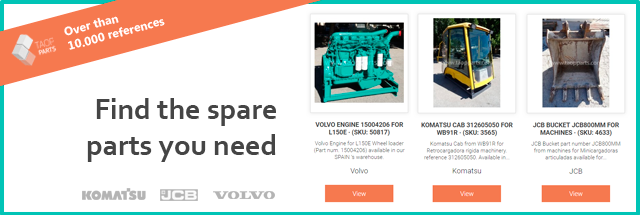 The pump must have the correct dimensions to withstand the pressure is generated in the circuit, then, reducing to the minimum the leakages between the supply area and the suction area, it must be carried out with extreme accuracy. In fact, the smaller the leakage is, the better the pump performance will be (leaks are losses due to construction tolerances between the different elements of the pump).
The pump must have the correct dimensions to withstand the pressure is generated in the circuit, then, reducing to the minimum the leakages between the supply area and the suction area, it must be carried out with extreme accuracy. In fact, the smaller the leakage is, the better the pump performance will be (leaks are losses due to construction tolerances between the different elements of the pump).
Operation of the basic hydraulic scheme
The engine rotation, linked to the pump gear, drags the other gear generating a depression zone in the suction pipe. The oil pushed by the atmospheric pressure present in the tank and recalled by the depression, fills the entire suction area. Instead, the oil caught between the gears teeth and the pump walls is pushed towards the discharged outlet and then into the connection tube to the manual distributor that puts the charging mouth in communication with the output.
The oil flows towards the rear chamber of the cylinder, pushing the piston and consequently the cylinder rod moves in the direction indicated by the arrow.
At the same time, the oil contained in the front chamber of the cylinder is directed to the tank passing through the output of the distributor.
The pressure read on the manometer at the beginning of the cylinder stroke is given by the sum of the strength (load losses) of the various components: pipe, connector, manual distributor, oil drain resistance, cylinder seals. The stoppage of the piston against the front cylinder head produces the end of stroke, i.e. the cylinder can no longer move.
The pump continues to push oil into the circuit and the oil, having no way out, increases the pressure until a component is broken. To prevent this inconvenience, a pressure relief valve is inserted on the pump outlet, which has the function of opening at a predetermined pressure (maximum working pressure) and connecting the discharge of the pump with the tank to prevent harmful pressure increases.
The calibration of the relief valve is obtained by loading the spring that holds a ball or a sealing cone in place. When the pressure exceeds the calibration value, the spring opens, releasing the passage of oil towards the drain. The whole area remains under pressure and the maximum pressure of the circuit is read on the manometer. In this case it would be 80 bar, for example.
Attention should be given to the suction because the pressure is lower (depression) than the atmospheric one. With the pump stopped, the oil cannot rise along the suction pipe because atmospheric pressure also acts inside the pipe.
When the engine is started, the pump draws in the oil and fills both the suction pipe and the pump cavity. (It is the same phenomenon that occurs when a drink is sucked from a can with a straw; a depression in relation to atmospheric pressure is created both in the mouth and in the straw). This causes an imbalance and the outside air pushes the drink through the straw and fills the oral cavity.
Posibility of execution of hydraulic pumps
In the next diagram we illustrate the possibilities of execution of hydraulic pumps:
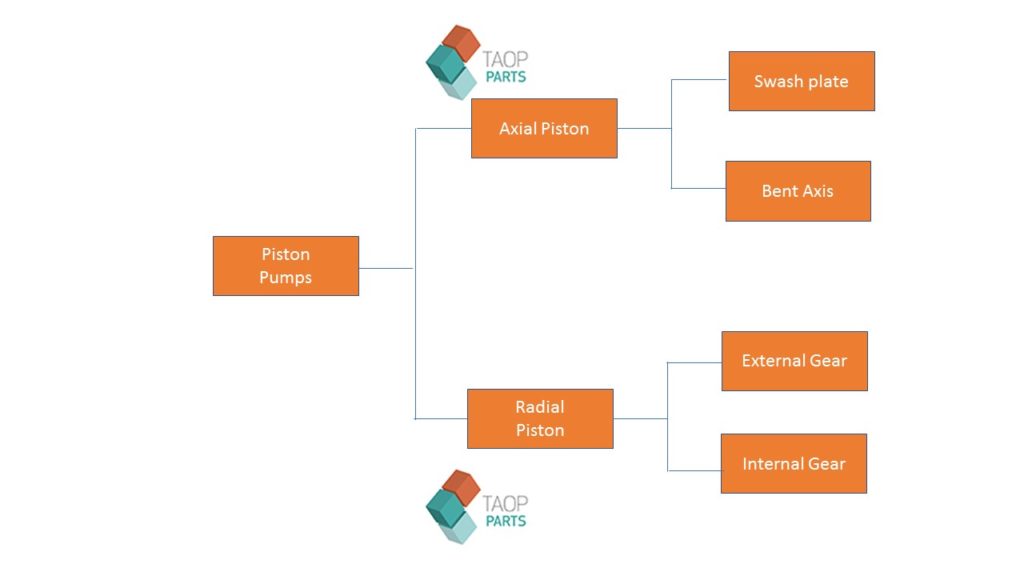
Especially, we will deal with the Axial Piston Pump.
This type of pump is very common due to its characteristic continuous operation. They are designed with a variable displacement mechanism to modify the outgoing flow and control the system pressure.
There are different ways of performing this type of control, for example through the inclined plate or inclined body pump. The most common ones have an inclined plate and consist of having a plate that can tilt with respect to the pistons to obtain a greater or lesser distance for each rotation (a greater displacement corresponds to a greater flow and, therefore, less pressure).
It is generally composed of a rotating cylindrical body. The pistons are connected by hinges and plates to the inclined plate (which is fixed with respect to the casing) and the pistons are driven by the rotating body.
The inclined body pump has a rotating cylindrical body; the pistons drag the rotating body through their movement or through a bevel gear or universal joint. In axial pumps there are usually 5 or 7 pistons.
The odd number of them is necessary to avoid dead spots. This type of pumps are a little more expensive than gear pumps, but offer a longer life if subjected to high pressure, in the presence of contaminants and with long and continuous cycles.
Axial piston pump operation
The cylinder block forms an angle in relation to the drive shaft, so each pump piston performs a compression stroke in the first half of the rotation and a suction stroke in the second half of rotation. At the maximum angle, the hydraulic pump provides the maximum oil flow; by reducing the angle of adjustment the stroke of the pistons also decreases and with it the flow rate of the pump. There is no flow when the cylinder block is at zero degrees in relation to the crankshaft. By adjusting the cylinder block in the opposite position to the one illustrated and without changing the direction of rotation of the motor shaft, the compression and suction stroke is reversed. Applications in a circuit where different pressure or flow rates are required.
In the following video we will show how to repair a pump for escape between the two bodies.
The basic steps will be the following:
Preparation of all necessary pieces
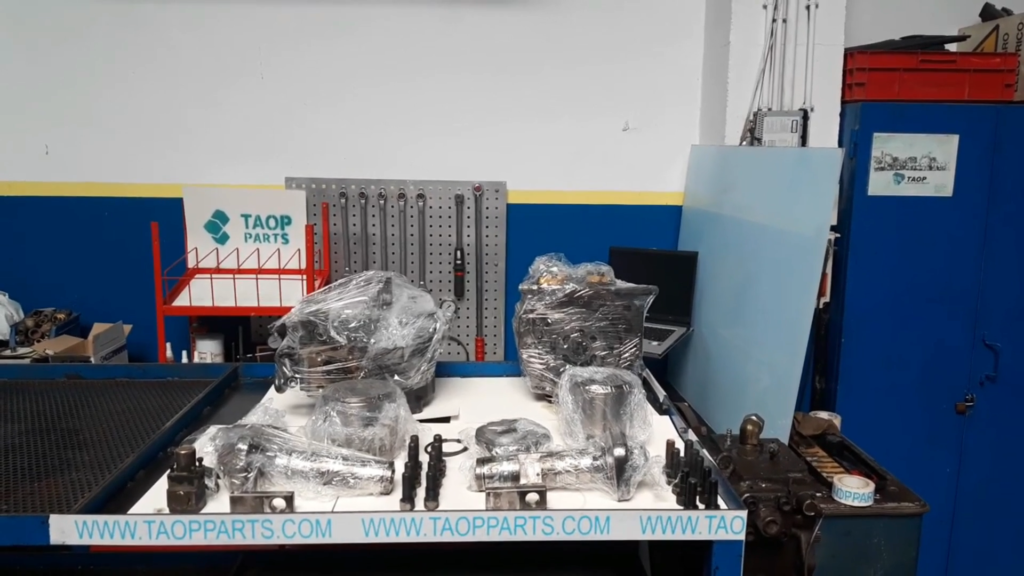 Servo piston Assembly in the front pump
Servo piston Assembly in the front pump
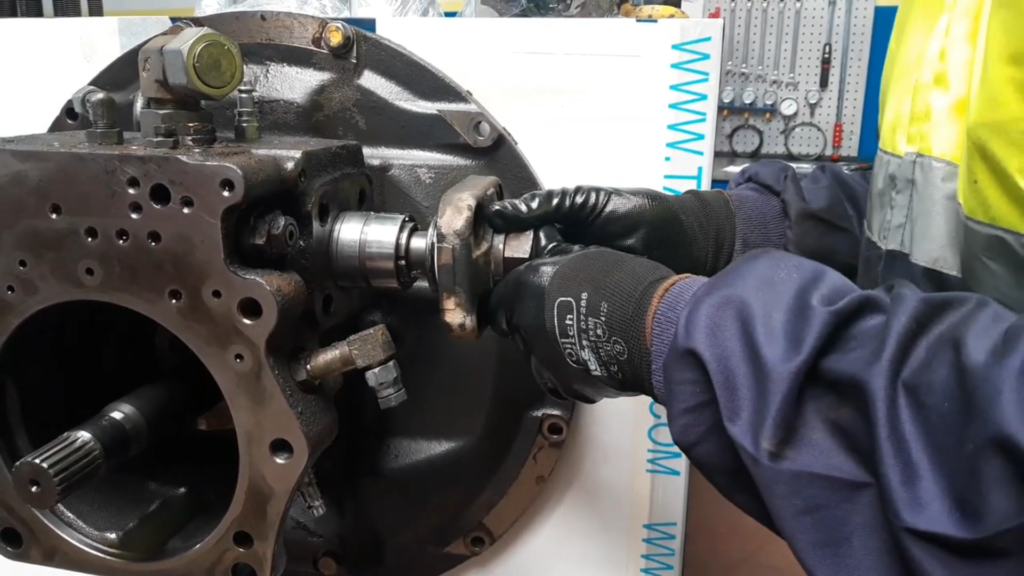 Mounting the bearing on the ramp
Mounting the bearing on the ramp
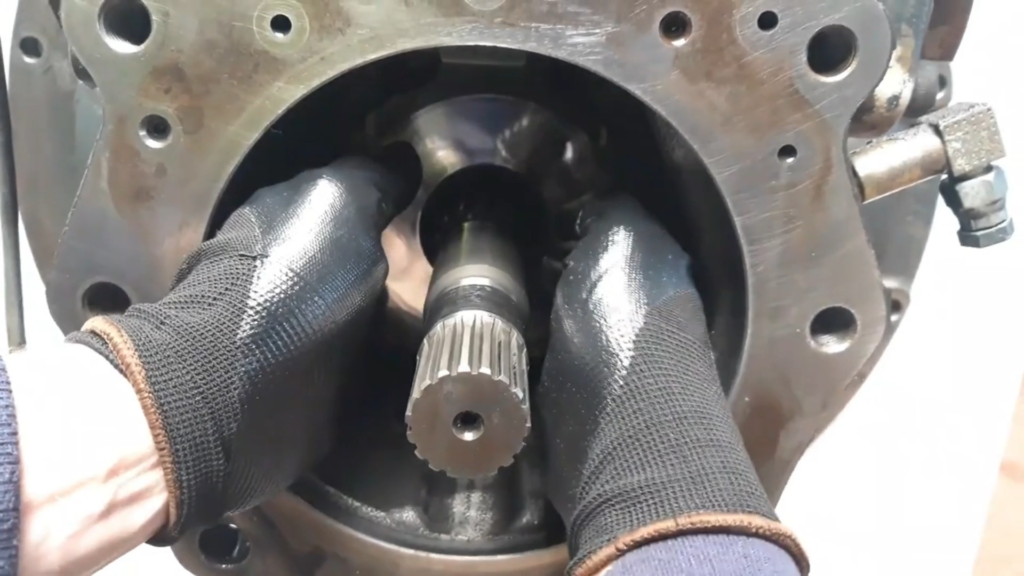 Cylinder block assembly
Cylinder block assembly
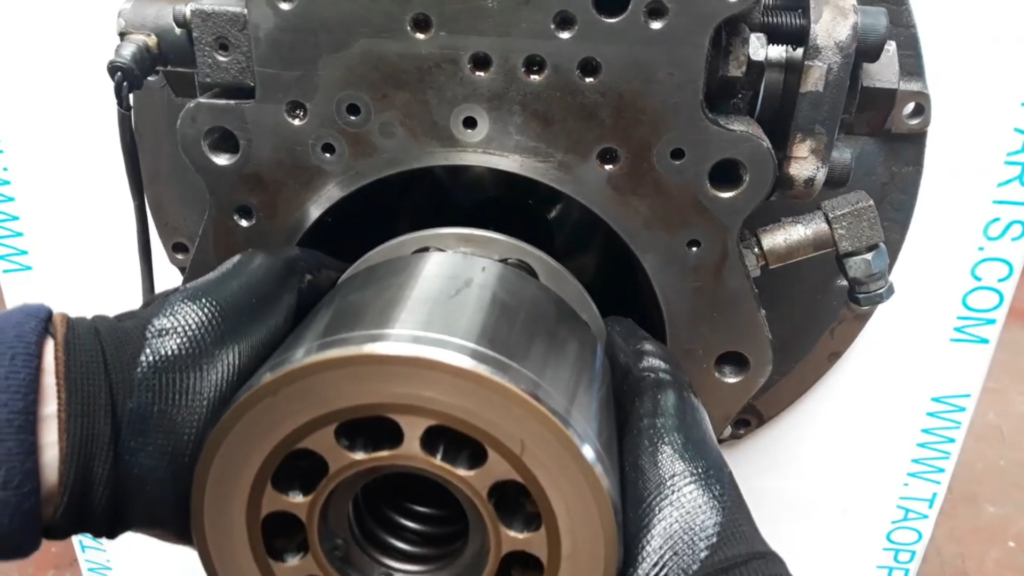 Mount the servo piston in the rear pump
Mount the servo piston in the rear pump
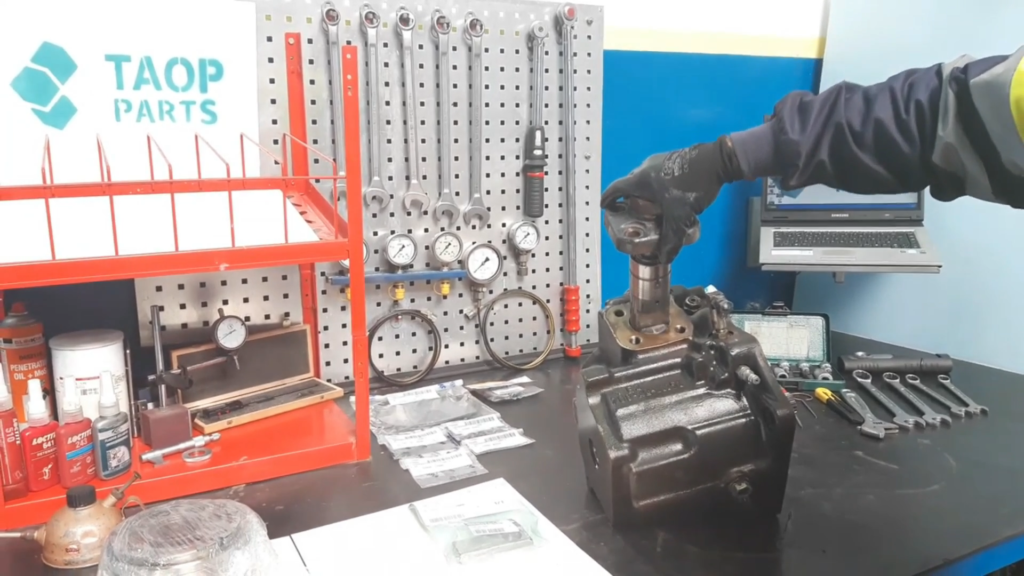 Installing the gasket in the rear pump
Installing the gasket in the rear pump
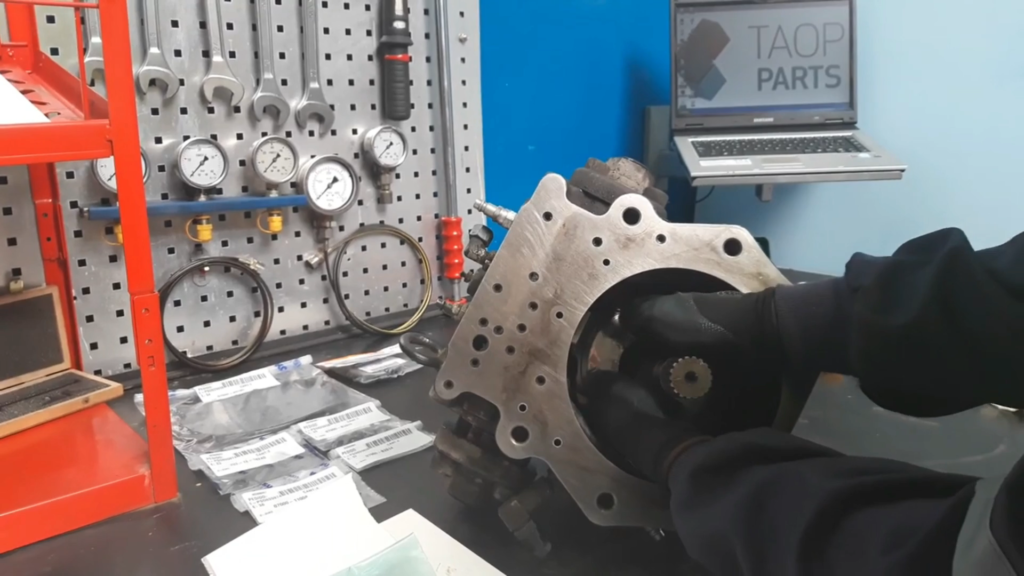 The two parts assembly
The two parts assembly
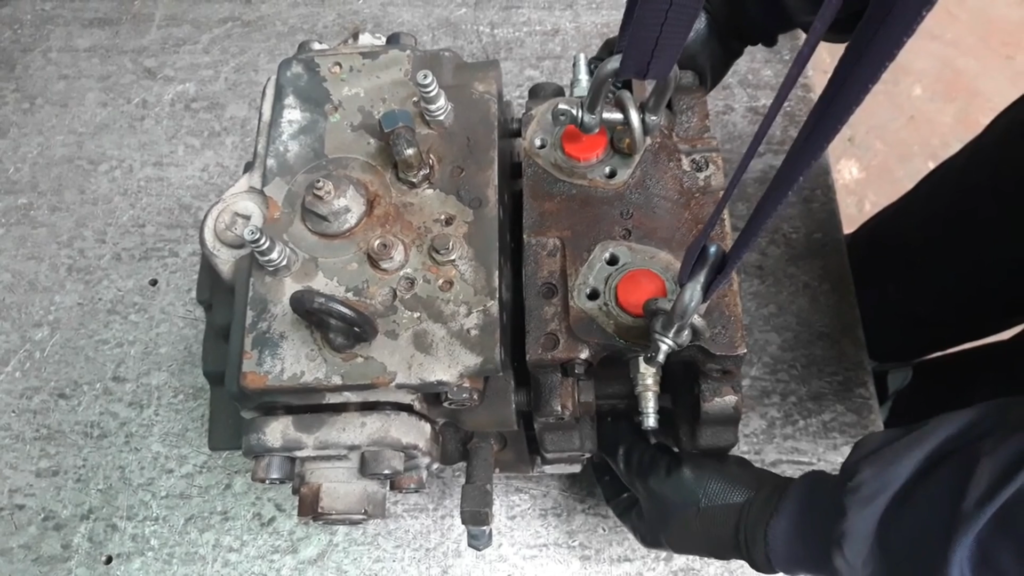
Eloy: our technician repairs the pump
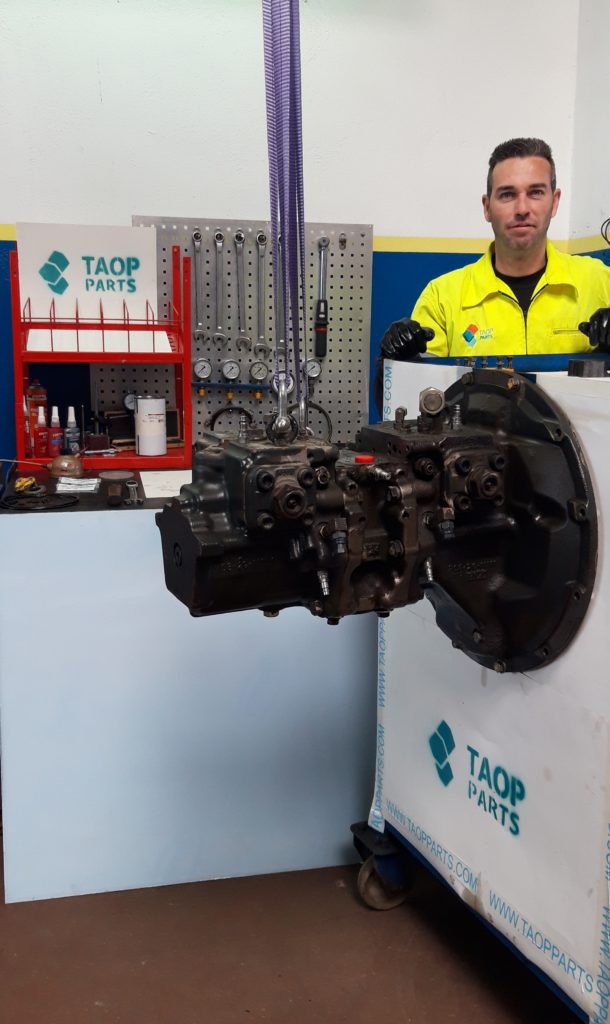
Video
Link of interests:
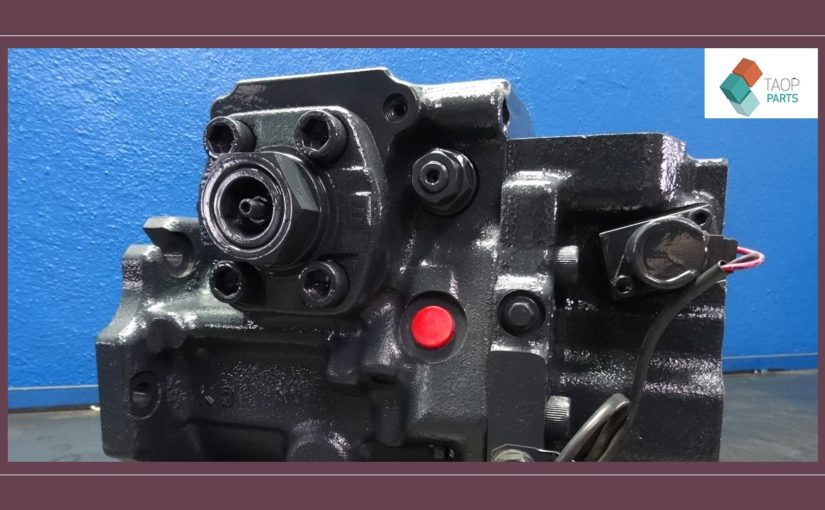
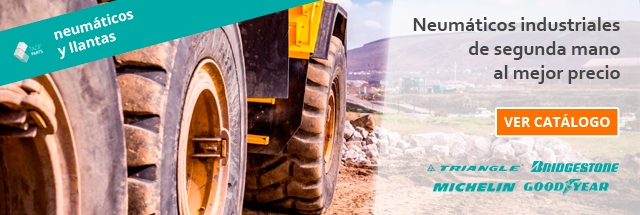
There are no words to show my appreciation!
I like the helpful info you provide in your articles.
I will bookmark your weblog and check again here regularly.
I’m quite certain I will learn many new stuff right here!
Best of luck for the next!
These are really enormous ideas in concerning blogging.
You have touched some good things here. Any way keep up wrinting.
Appreciate the recommendation. Will try it out.
Good post. I’m going through some of these issues as well..
I’d incessantly want to be update on new posts on this website, saved to favorites!
Hey there! I’m at work surfing around your blog from my
new iphone 4! Just wanted to say I love reading your blog and look forward to all your posts!
Carry on the outstanding work!
This really answered my drawback, thank you!